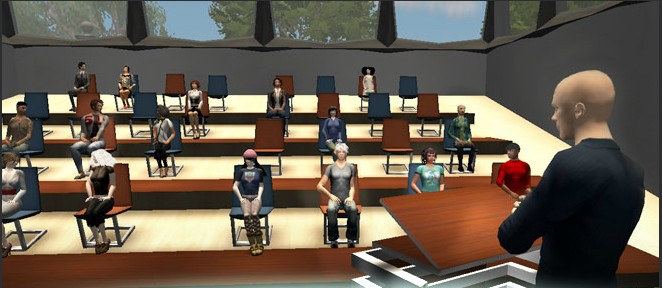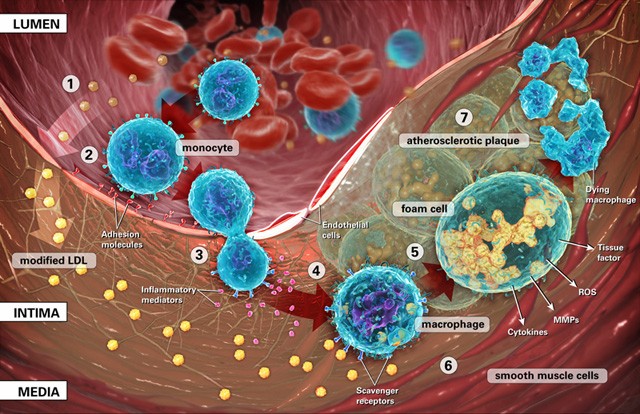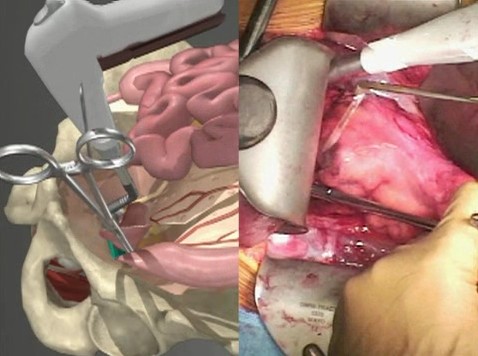Ever visited Second Life? In this parallel world we humans are represented by avatars, creatures we create to represent us in this alternative life. We characterize our avatars. What does this say about us in the real world?
The picture depicted below is a university lecture hall in Second Life. If you are a Second Lifer you could be in this room studying medicine, or physics, or literature. You could converse with the student next to you, or listen to the lecture. Second Life lets you interact at many levels and that interaction is being used by researchers to better understand both the virtual and real us and how they relate.

Researchers are looking at how avatars can influence real behaviour in positive ways. One study in The Journal of Virtual Worlds Research appeared in an article published in 2009 which described a study looking at the relationship between life styles in the virtual and real world. The study uses an interviewing process conducted between an avatar interviewer and an avatar respondent to look at obesity, body mass and self perception. A number of hypotheses were proposed including:
- That individuals with avatars who were physically active in Second Life were more likely to be physically active in real life.
- That individuals who represented themselves through thin avatars were more likely to be thin in real life.
- That when interviewed by a heavy avatar individuals in Second life were more likely to admit to being heavier than when interviewed by a thin avatar.
The study, although not complete, concludes that virtual reality provides healthcare professionals with unique opportunities to tackle sensitive issues like obesity, body image and physical fitness with the potential to influence real-world behaviors.
But virtual reality is proving to be more than just an opportunity to study human behaviour. Medical professionals see in the virtual world a place where they can become more knowledgeable and hone their craft as surgeons, technicians, and nurses. Simulating the real world has enormous benefits and the virtual world is a great place to work through medical problems and solve them.
Medical Simulation is More Than Virtual Reality
It can be the creation of a virtual world with avatars acting out the roles of humans, but it can also be smart mannequins with properties suitable for healthcare workers to use for training. Simulation can also be detailed representations of anatomy and physiology recreated on a computer screen and rendered in 3D for studying and practice.
Smart Mannequins
Working on medical dummies or mannequins has been around a long time. If you have ever taken a CPR course you have probably experienced some interaction with a mannequin. Today’s smart mannequins are sophisticated computer-aided simulators that can interact with medical students, display symptoms of patients with a variety of medical conditions, and even communicate where it hurts.
There are a number of companies building these smart learning tools. CAE, a Canadian company based in Montreal, produces flight training simulators and now medical ones as well. Caesar ™ is a mannequin that displays a wide range of physiological responses to traumatic injuries. Medical trainees can treat Caesar as if it were a real patient listening to heart and lung sounds, administering medications, waiting for appropriate responses and listening as the mannequin provides feedback. CAE has other robotic mannequin simulators. iStan (R) v2 is described as a fully articulated, tetherless patient simulator that comes with patient monitoring software. And METIman is a simulator for nursing or pre-hospital training. There are pediatric and emergency METI simulators.
CAE is involved in developing more than just smart mannequins. The company marries mannequins and software together to create other simulation technology. One of these is Vimedix, which CAE describes as the first transthoracic echocardiography simulator. CAE is adding more of these types of simulators including ones that allow surgeons to practice procedures such as endoscopies, laparoscopies, upper and cardiac valve replacements. The simulators employ haptics creating tactile feedback on instrumentation used during the simulated procedures.
Virtual Reality and Gaming
The marriage of medicine and computing has produced opportunities for gathering vasts amount of knowledge about patients, diseases, treatments, surgical procedures, and then using the collected data to build what is essentially gaming simulations for education and research.
Creating simulated realities gives physicians, nurses, technicians and other medical practitioners the ability to do procedures and try techniques without fear of hurting or losing a patient. The technologies use 3D modeling and 3D vision creating environments that are indistinguishable from actual medical procedures.
A number of companies have developed these virtual computing environments. The applications resemble those found in the popular gaming world and one in particular is very much like Second Life.
Pulse!!
This is a Second Life-styled learning platform designed as a virtual hospital. The game was developed By Breakaway Ltd., a company in Hunt Valley, Maryland. Pulse!! has been piloted at Texas A&M University. Learners enter a three-dimensional virtual hospital and deal with patients in many ways. Whether you are an admitting clerk, an ER physician, nurse, phlebotomist or other healthcare worker, there is an opportunity for you to create an avatar and participate in the online community.
Pulse!! includes a full range of medical devices and operational capability to make the learning environment “virtually” real. Making mistakes on a Pulse!! patient leads to a “virtual” death. The performance of all participants is continuously monitored. The goal, reduced real-world medical errors.
Breakaway has also developed a dental implant training simulator for the Medical College of Georgia, and a Pediatric Pain Management 3D virtual reality game called Free Dive which invites players to swim with sea turtles and tropical fish while hunting for treasure. Free Dive is designed to engage children undergoing painful medical procedures to distract them.
InViVo
InViVo Communications Inc., is a Toronto, Ontario based company, that designs 3D interactive medical gaming applications. The company has created products for healthcare workers to learn about stem cells, drug-to-cell interactions, dosing strategies in dealing with highly resistant bacteria, and others. InViVo applications are designed as computer games to help learners master a topic or skill.

BioDigital
Surgery always relied on three premises in the learning process. Watch, do and then teach. But surgery has gotten more complicated as more and more technology is applied to patient interventions. That is why simulation works very well in helping surgeons master procedures leading to startlingly better outcomes for patients.
- BioDigital simulation provides a 3D, dynamic and interactive platform for practicing surgical procedures.

















